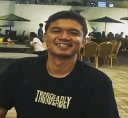Abstract
This study aims to investigate Krama Inggil language reproduction through courses of pambiwara keraton surakarta, as an effort by keraton to maintain power legitimacy on javanese culture, in relation to keraton's function that has been shifted into culture functionary. It is a qualitative study, a case study specifically. The theory used in this study is a theory by Pierre Bourdieu, which explains language as a symbolic power related to agent's survival strategy in the arena by utilizing possessed capital. This study shows that keraton has established a course of pambiwara as a strategy to reproduce cultural symbols that it has, particularly the use of Krama Inggil language to maintain keraton's power legitimacy on javanese culture as the oldest heritage of Mataram monarchy.
1. Authors retain copyright and grant the journal right of first publication with the work simultaneously licensed under a Creative Commons Atribusi-Non Commercial-Share Alike (CC BY-NC-SA).
2. Authors are able to enter into separate, additional contractual arrangements for the non-exclusive distribution of the journal's published version of the work (e.g., post it to an institutional repository or publish it in a book), with an acknowledgement of its initial publication in this journal.
3. Every publication (printed/electronic) are open access for educational purposes, research, and library. Other than the aims mentioned above, the editorial board is not responsible for copyright violation.







